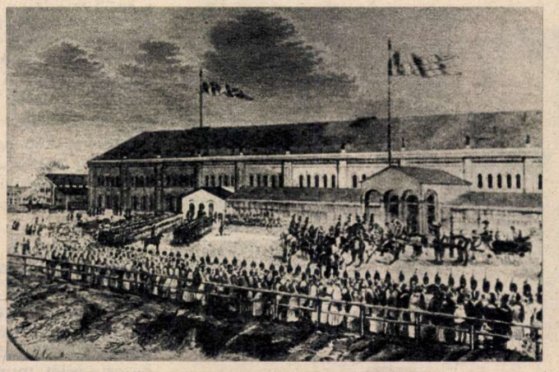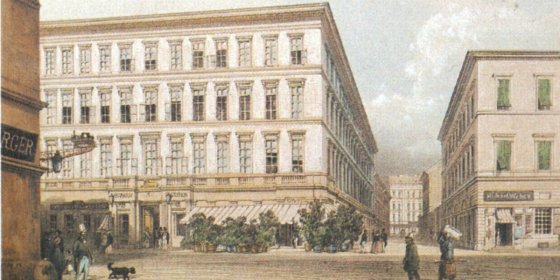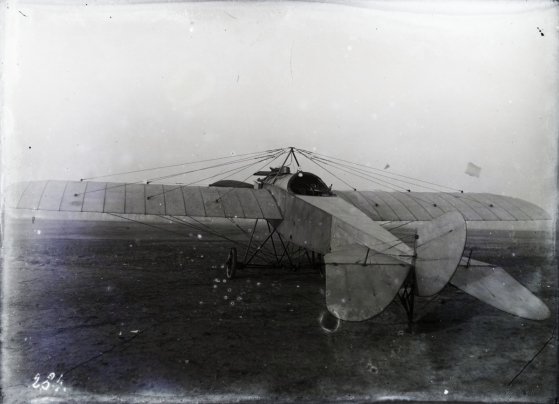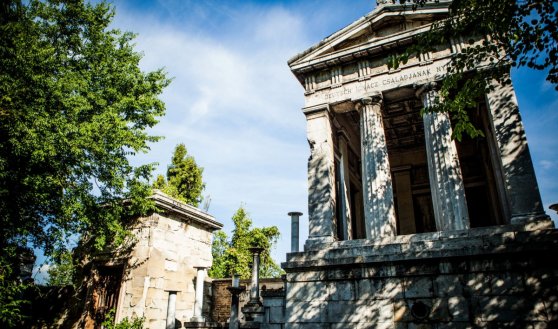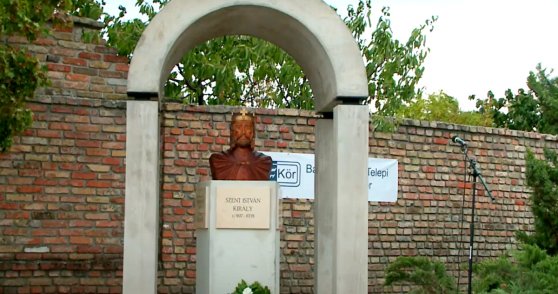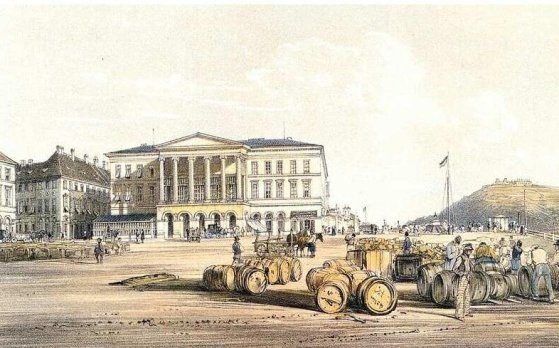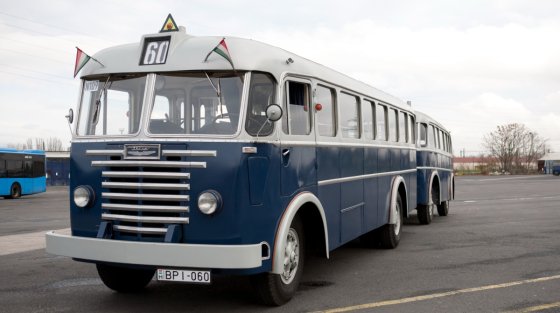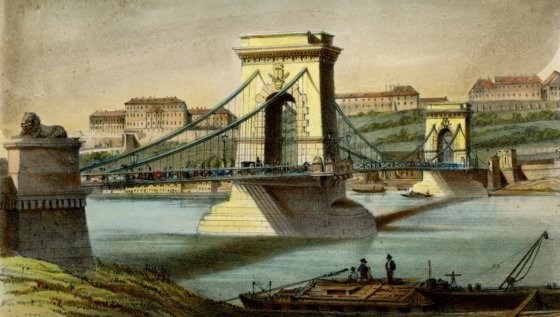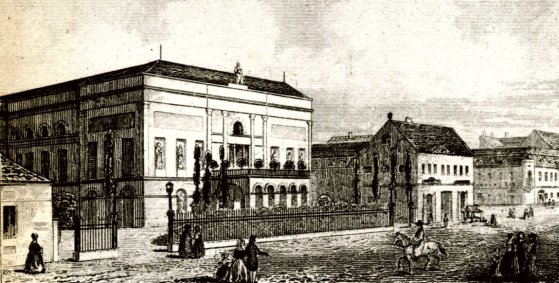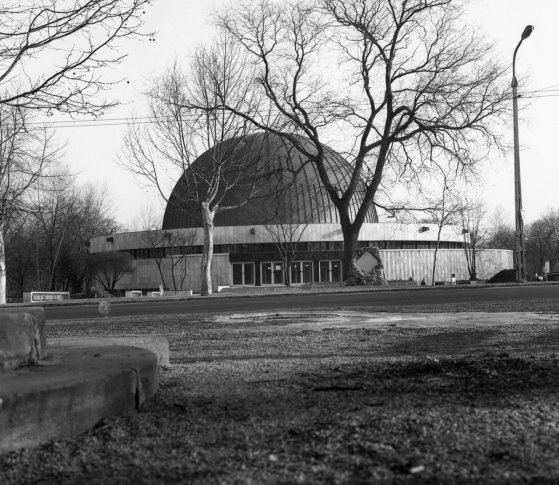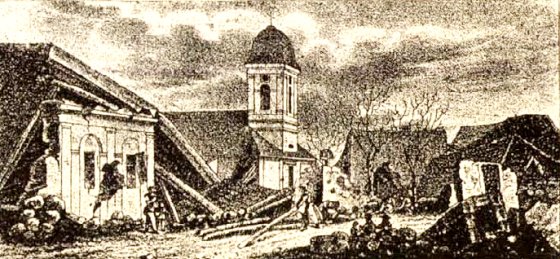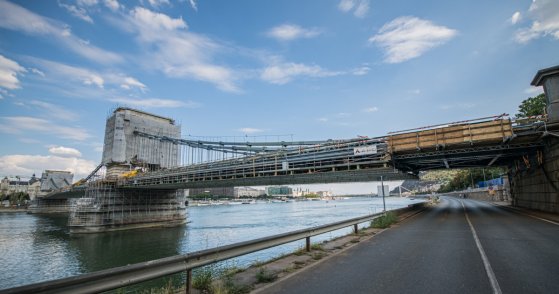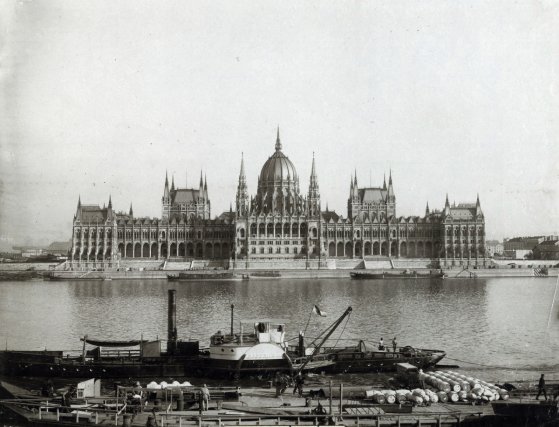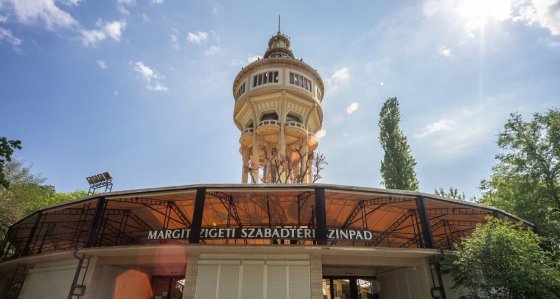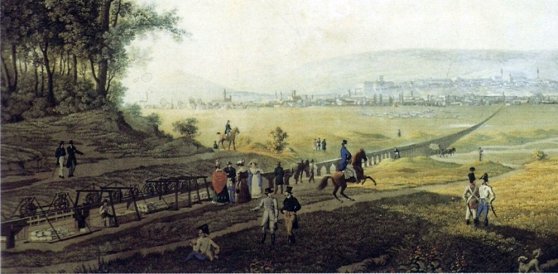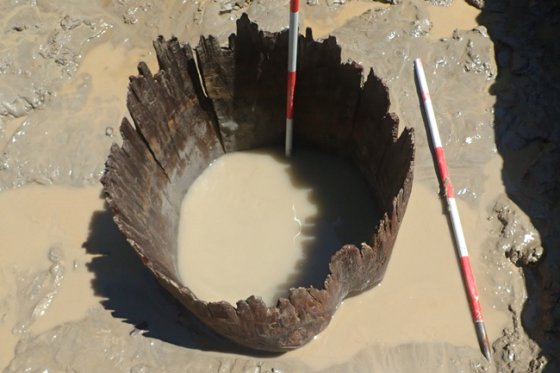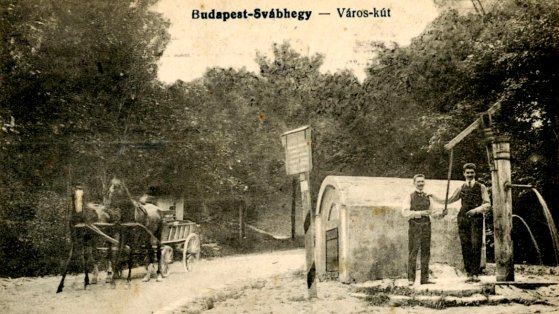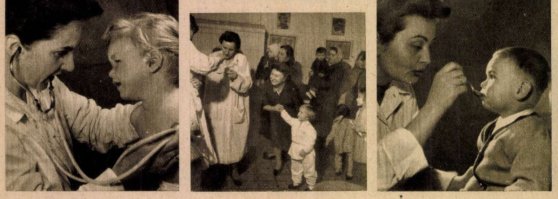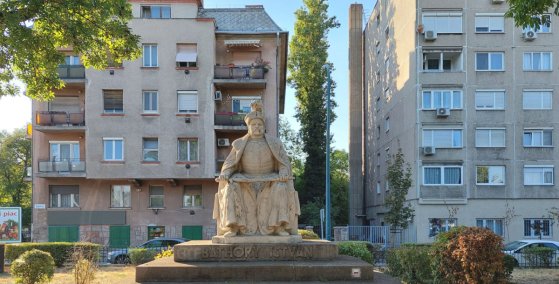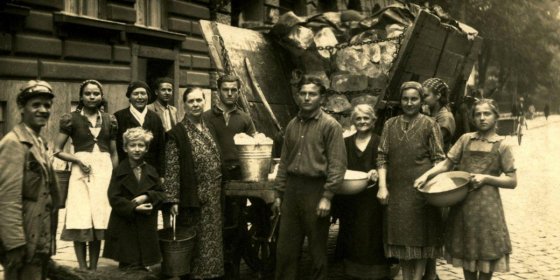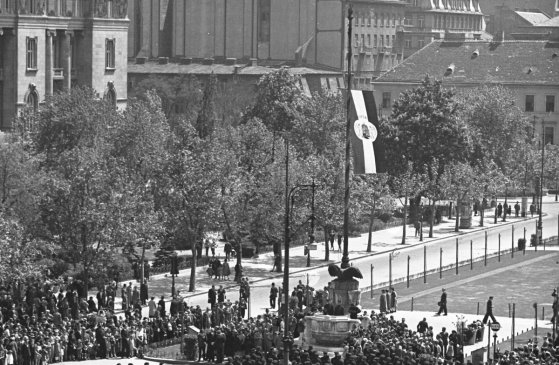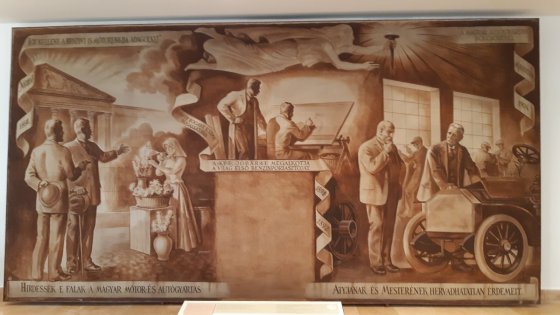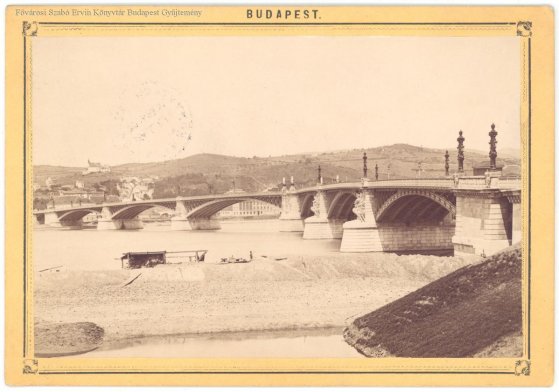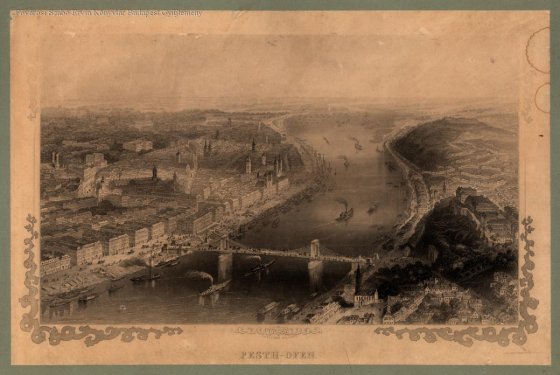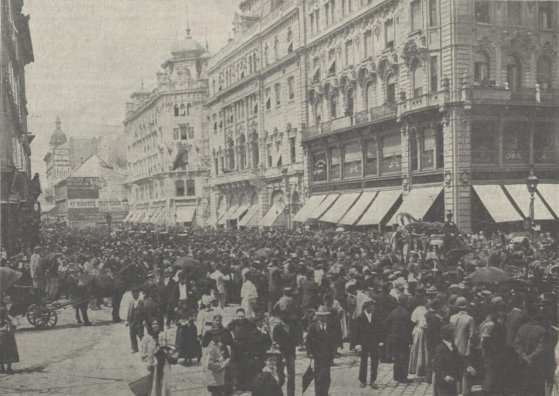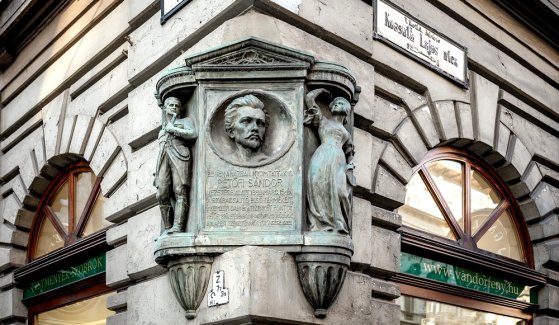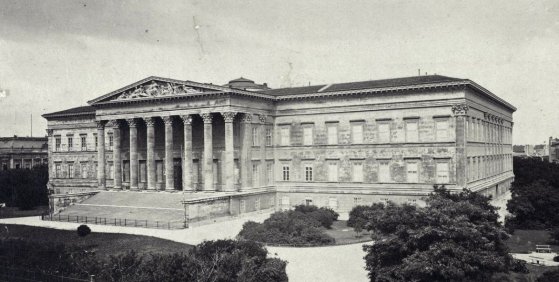 The „intertwined history” of the bridges and the city of Budapest
Which ideas and events have shaped the fate of bridges of Budapest and the cityscape? Alongside many other interesting facts, this question is also answered this newly published book by the Budapest City Archives, which introduces the history of bridges in Budapest.
The „intertwined history” of the bridges and the city of Budapest
Which ideas and events have shaped the fate of bridges of Budapest and the cityscape? Alongside many other interesting facts, this question is also answered this newly published book by the Budapest City Archives, which introduces the history of bridges in Budapest.
Budapest
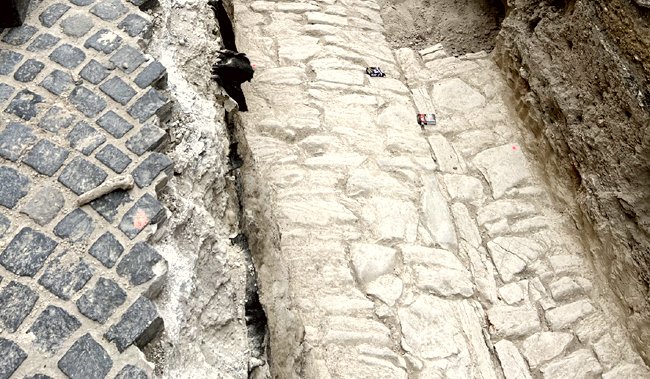 Archaeologists have found the road of the Buda Castle from Sigismund-era
Archaeologists have found the road of the Buda Castle from Sigismund-era
September 2, 2022 at 6:00 PM
A large section of a road from the time of Sigismund of Luxembourg, dating from the beginning of the 15th century, was excavated by the staff of the Budapest History Museum at the Buda Castle, in the area below the Savoy Terrace. Medieval and early modern layers can also be observed on the excavated road section.
The railway line from Pest to Szolnok was opened 175 years ago
September 2, 2022 at 9:00 AM
In addition to travel from Pest to Vác by rail, it was made possible to reach Szolnok, as the new line was opened 175 years ago. This date is less well-known than 1846, which is known incorrectly as the opening of the first Hungarian railway but "only" the first steam-hauled railway line was opened then. The opening of the Szolnok line on 1 September 1847 was at least as important because of this, Pest's central role in trade strengthened.
Tigris Szálló - one of the most elegant hostels in Pest of its time was downgraded to a residential house
August 28, 2022 at 11:37 AM
One of the most elegant hotels in Pest was the Tigris Szálló ('Hotel Tiger'), designed by József Hild at 5 Nádor Street - 10 Mérleg Street in the 5th District in the middle of the 19th century. Its coffee house and restaurant were also notable, for a while the editorial office of the Pesti Hírlap led by Lajos Kossuth operated in the building, but reading evenings and classical music concerts were also held here for the eminent, cultured public. The building was significantly remodelled in 1901-1902, perhaps even downgraded a little, but even today it is still considered one of József Hild's best public buildings.
Air Parade in 1912 - When people had to pay to see the air show
August 27, 2022 at 11:32 AM
The air parade on 20 August of this year was cancelled, although the air shows on St. Stephen's Day now have a history of 110 years in Budapest. The first air show on 20 August was held in 1912, with the same purpose as today: to demonstrate the skills of the pilot and to show the capabilities of the aircraft. People had to pay for the big and spectacular event at the time, but it turned out afterwards that the spectators would have expected more for their money.
Secrets of the Salgótarjáni Street Jewish Cemetery
August 26, 2022 at 6:30 PM
One of the most unique cemeteries in Hungary, the Salgótarjáni Street Jewish Cemetery in Budapest was opened in 1874, adjacent to today's Fiumei Street Cemetery. Many grave monuments combine elements of Jewish symbols and Hungarian folk motifs. Most of the mausoleums serving as the final resting place of the elite of Pest's Jews were designed by Sándor Fellner and Zsigmond Quittner. Anyone can see them on 4 September.
A statue of St. István was inaugurated in the 22nd district
August 25, 2022 at 3:30 PM
On 20 August, the bust of King Saint István in the Gábor Baross settlement in the 22nd district was inaugurated. A structure was also erected around the wooden creation. The new monument was placed at the Ispiláng street bus terminal.
The establishment of the Pest Casino
August 25, 2022 at 11:28 AM
One of István Széchenyi's first creations was the Pest Casino, which was a kind of leisure club with cultural and economic development goals. The Pest Casino was opened 195 years ago, on 20 August 1827.
Special Ikarus buses can be seen at the Transport Museum during the weekend
August 24, 2022 at 4:30 PM
During the weekend, visitors can see special Ikarus buses in Kőbánya, in the Diesel Hall of the Észáki Járműjavító. Among the vehicles of the Transport Museum, the famous Faros Ikarus, as well as types 211 and 311 will be exhibited, and for the first time, an Ikarus 256 bus will be on display.
A ceremony in Pest 180 years ago: the laying of the foundation stone of the Chain Bridge
August 24, 2022 at 11:24 AM
The foundation stone of the Chain Bridge is located under the bridgehead in Pest. It was laid down 180 years ago, on the afternoon of 24 August 1842, and the entire "elite" of that time was represented at the ceremony. The foundation stone laying ceremony was a carefully composed celebration, where it was also stipulated which guest would carry the decorative trowel or the hammer for the symbolic blows.
After renovation, the theater memorial stone returned to Blaha Lujza Square
August 22, 2022 at 7:30 PM
After the restoration work was completed, the memorial stone of the theater was placed in its place on Blaha Lujza Square. The monument marking the site of the former National Theater was inaugurated in December 1973, exactly 100 years after the foundation stone of the National Theater was laid.
The first building of the National Theatre was handed over 185 years ago - the County of Pest embraced the cause of Hungarian-language plays
August 22, 2022 at 11:10 AM
It opened as the Hungarian Theatre of Pest 185 years ago, on 22 August 1837, but three years later it was already operating as the National Theatre. The first permanent Hungarian-language theatre was made possible by the support of the County of Pest and the generous donation of Prince Antal Grassalkovich. The building was located at today's 3 Rákóczi Road, it was first built around and expanded, then closed and demolished in 1908.
The Planetarium opened 45 years ago
August 18, 2022 at 10:44 AM
The Planetarium is currently not operating in Budapest, as the building, which opened on 20 August 1977, has simply fallen into disrepair, and the projector is fatally outdated. The renovation has been delayed for years.
In the footsteps of an antiquity in Ferencváros - the first church on Bakáts Square was built 200 years ago
August 17, 2022 at 10:18 AM
The Bakáts Square church is one of Miklós Ybl's early masterpieces, which since 1879 has not only been the most important building in the square, but also a symbol of Ferencváros. We have been admiring its renovated exterior for years, and the reconstruction of the interior spaces will be completed in the foreseeable future. Probably only a few people know that the church has been operating since 1822 on the 9th District's best-known square. It was built 200 years ago in such a way that both the commissioner and the users knew that it would only serve the Catholic population of the area until it was replaced by a permanent church. Although the "exchange" was not without difficulties, until 1865 it was the centre of faith for the Catholics of "Franzstadt".
On 22 August, the traffic restrictions at the Buda bridgehead of the Chain Bridge will end
August 16, 2022 at 10:00 AM
The work requiring traffic restrictions at the Lánchíd bridgehead in Buda has ended, but the road section between Halász street and Döbrentei square will remain closed until 22 August due to the national holiday on 20 August and the fireworks. During the modernization works of the Lánchíd, the experts also carried out the reconstruction of structural elements crucial to the bridge's stability at the bridgehead in Buda.
The silent laying of the foundation stone of the Parliament
August 15, 2022 at 10:11 AM
The Hungarian Parliament is one of the most beautiful parliament buildings in the world. The massive house, designed by Imre Steindl, began to be built in 1885, and the foundation stone was laid almost two years later, without much celebration.
An exhibition about King Attila opened in the Margaret Island Water Tower
August 12, 2022 at 7:00 PM
The exhibition opened on Margit Island, in the historic Water Tower, presents the figure of King Attila, as well as the history of the Huns and the Hun Empire. The exhibition also provides a glimpse into the lifestyle of the time and court life.
The first Hungarian railway was built 195 years ago - the special structure delivered construction materials from Kőbánya
August 12, 2022 at 6:55 PM
The first Hungarian railway line led from today's Pest to Kőbánya. The 7.6-kilometeresection, built in 1827 and realized with a special technical solution, was not profitable, and was discontinued after 7 months.
Archaeologists found a 7,000-year-old wood-lined well at Budafoki road
August 12, 2022 at 5:00 PM
During the excavation at Budafoki road in the 11th district, the archaeologists uncovered a seven-thousand-year-old well, which was created from the hollowed-out trunk of a large tree. Previously, details of a Neolithic and an Árpád-era settlement came to light in the area.
A forgotten occupation: water sellers on the streets of Pest and Buda
August 11, 2022 at 6:47 PM
Water is a basic necessity for life, so its significance has been extremely important in all ages. Today it is natural that water flows from the tap, but in the past this was not the case, water was also brought to the houses by vendors so that people could wash, cook, clean themselves, and most importantly, drink. In the 19th century, Pest and Buda began to develop significantly, the local wells and sources could no longer fully satisfy the needs, so water sellers appeared who measured their portage for money.
Many people in Budapest were afraid of the polio vaccine, but in the end they managed to defeat the disease
August 8, 2022 at 3:47 PM
The polio epidemic took its toll in several waves in many parts of the country in the 1950s. The first vaccination campaign in Budapest and the country took place 65 years ago, at the end of July and beginning of August, 1957. But in the capital, far fewer people vaccinated their children than elsewhere, because many were afraid of vaccination. People finally managed to defeat this terrible viral disease.
Polish-Hungarian two good friends - the calvary of István Báthory's sculpture in Budapest
August 7, 2022 at 3:33 PM
The friendship between the Polish and Hungarian people goes back centuries, and it was founded by the kings ruling in the Middle Ages. One of the most important of them was István Báthory, who also acquired the Polish throne as a Transylvanian prince. His memory was cherished between the two world wars, and in 1933 - on the four hundredth anniversary of the monarch's birth - there were plans to erect a statue to him in Budapest, which was finally put in place only a quarter of a century later.
The plot of the demolished Burg Hotel was transferred to the property manager of the MNB
August 5, 2022 at 5:30 PM
The former Diplomatic House on Szentáromság square was demolished at the beginning of 2022, and a new conference center will be built in its place, the visual plans of which have already been presented. The plot was recently transferred to the property manager of the MNB.
When icemen still walked the streets of Pest and Buda
August 5, 2022 at 2:26 PM
The heat is raging on the streets of Budapest, and we are greeted by increasingly hot days. During this unusually warm period, we always think of the possibilities of refreshment, and of cooling with the beneficial effect of ice. In the last century, one of the characteristic figures of the streets of Budapest was the iceman, who transported huge blocks of ice to cool food, fill ice stacks, and cut them to the required size. Long after the appearance of the first refrigerators, even in the 1950s and 1960s, ice trucks were on the streets of Pest and Buda, as evidenced by contemporary photographs.
A forgotten monument on Szabadság Square - The messages of the Relic National Flag
August 3, 2022 at 1:35 PM
Szabadság Square is still home to many statues and monuments today, and it was no different in the first half of the 20th century. After the Trianon peace decree, the allegorical statues commemorating the separated parts of the country were erected here, and then the National Flag. The latter's idea was formulated in August 1927 - ninety-five years ago - and was followed by action half a year later.
The famous Hungarian inventor passed away 100 years ago - Donát Bánki stayed here to enrich his country
August 2, 2022 at 1:20 PM
He made the world's first atomizer engine together with János Csonka, his other invention, the Bánki Turbine, bears his name, and he also designed the mechanical equipment of the former Elevátor House on Boráros Square, the grain transfer building demolished after the war. Donát Bánki was a legendary engineer of the Ganz Factory and a renowned teacher at the University of Technology. He died in Budapest on 1 August 1922.
The construction of the Margaret Bridge began before the city unification - piling began 150 years ago
August 1, 2022 at 9:00 AM
The Margaret Bridge was the second bridge between Pest and Buda, the construction of which began 150 years ago, on 1 August 1872, even before the unification of the city. Many people criticized the designated location, but the government decided that the new Danube crossing should connect to the planned Outer Ring Road and through it to the Sugárút [Avenue]. The bridge was designed by a French engineer and built by the French company he founded, and was completed in four years.
When the Turkish Sultan visited Pest and Buda
July 31, 2022 at 10:30 AM
The Turkish Sultan arrived in Pest-Buda in the summer of 1867. On the occasion of the one-day visit, the people of Pest organised a folk ceremony, welcoming the guest with 72 cannon shots. Pasha Abdul-Aziz stayed here for only a few hours, visited the the royal palace in the Castle, and his program even included a carriage ride in Pest, and then left in the same way as he arrived, by boat.
The first lord mayor of Budapest died 125 years ago
July 30, 2022 at 11:00 AM
Károly Ráth was the lord mayor of Budapest from the time of the unification of the city, in 1873, and he was re-elected a total of four times. He held this post in the quarter century when the Hungarian capital developed into a metropolis. He witnessed the construction of Andrássy Avenue and Outer Ring Road, and saw how Budapest's famous buildings, public institutions, schools, and hospitals were constructed. He even took part in the millennium celebrations and died as mayor 125 years ago, on 30 July 1897.
The Landerer printing house has become a historical monument
July 29, 2022 at 3:00 PM
Five new locations have been added to the list of historical monuments. Among them is the former Landerer printing house in the 5th District, where the 12 points formulating the demands of the 1848 revolution and the National Anthem were printed.
Interior transformation of the National Museum - The building was also expanded with a hidden floor
July 29, 2022 at 9:00 AM
The Hungarian National Museum is one of the iconic buildings of our country, so since it was handed over in 1847, attention has been paid to its condition. By the beginning of the 20th century, however, its collection had already grown to such an extent that excessive crowding made its operation impossible. Some of the preserved material was transported to other buildings, and then in 1926, its large-scale restoration began, during which a hidden, third floor was also created in 1927 - ninety-five years ago.
More articles
 The „intertwined history” of the bridges and the city of Budapest
Which ideas and events have shaped the fate of bridges of Budapest and the cityscape? Alongside many other interesting facts, this question is also answered this newly published book by the Budapest City Archives, which introduces the history of bridges in Budapest.
The „intertwined history” of the bridges and the city of Budapest
Which ideas and events have shaped the fate of bridges of Budapest and the cityscape? Alongside many other interesting facts, this question is also answered this newly published book by the Budapest City Archives, which introduces the history of bridges in Budapest.
 The Bridge Report, which brought a turning point in the history of Budapest
A travel report that changed the history of Pest and Buda, as well as Hungary. The little book contributed to the change of half a thousand years of legal customs and the implementation of an investment of unprecedented size and technical quality. This book was The Bridge Report [Hídjelentés in Hungarian].
The Bridge Report, which brought a turning point in the history of Budapest
A travel report that changed the history of Pest and Buda, as well as Hungary. The little book contributed to the change of half a thousand years of legal customs and the implementation of an investment of unprecedented size and technical quality. This book was The Bridge Report [Hídjelentés in Hungarian].
 Drama on the university wall - The heroic monument was planned 95 years ago
In the constant hustle and bustle of the Egyetem Square in Pest, the students may not even notice the monument that decorates the short section of wall between the church and the central building of ELTE. However, it commemorates their predecessors, the heroes who fought for their country in World War I, and those who heroically helped them. The first design of the dramatically collapsing soldier was born in 1928, ninety-five years ago.
Drama on the university wall - The heroic monument was planned 95 years ago
In the constant hustle and bustle of the Egyetem Square in Pest, the students may not even notice the monument that decorates the short section of wall between the church and the central building of ELTE. However, it commemorates their predecessors, the heroes who fought for their country in World War I, and those who heroically helped them. The first design of the dramatically collapsing soldier was born in 1928, ninety-five years ago.

